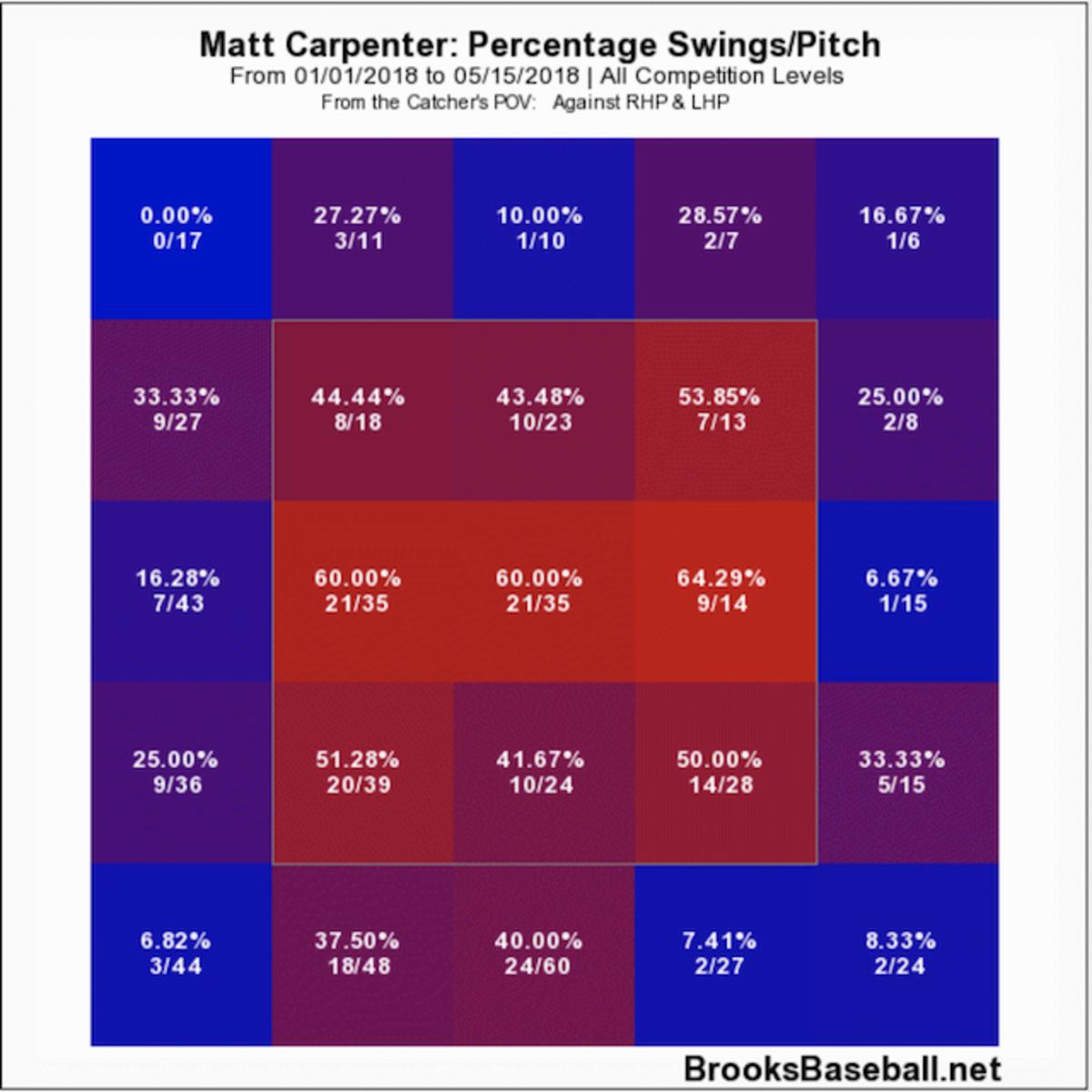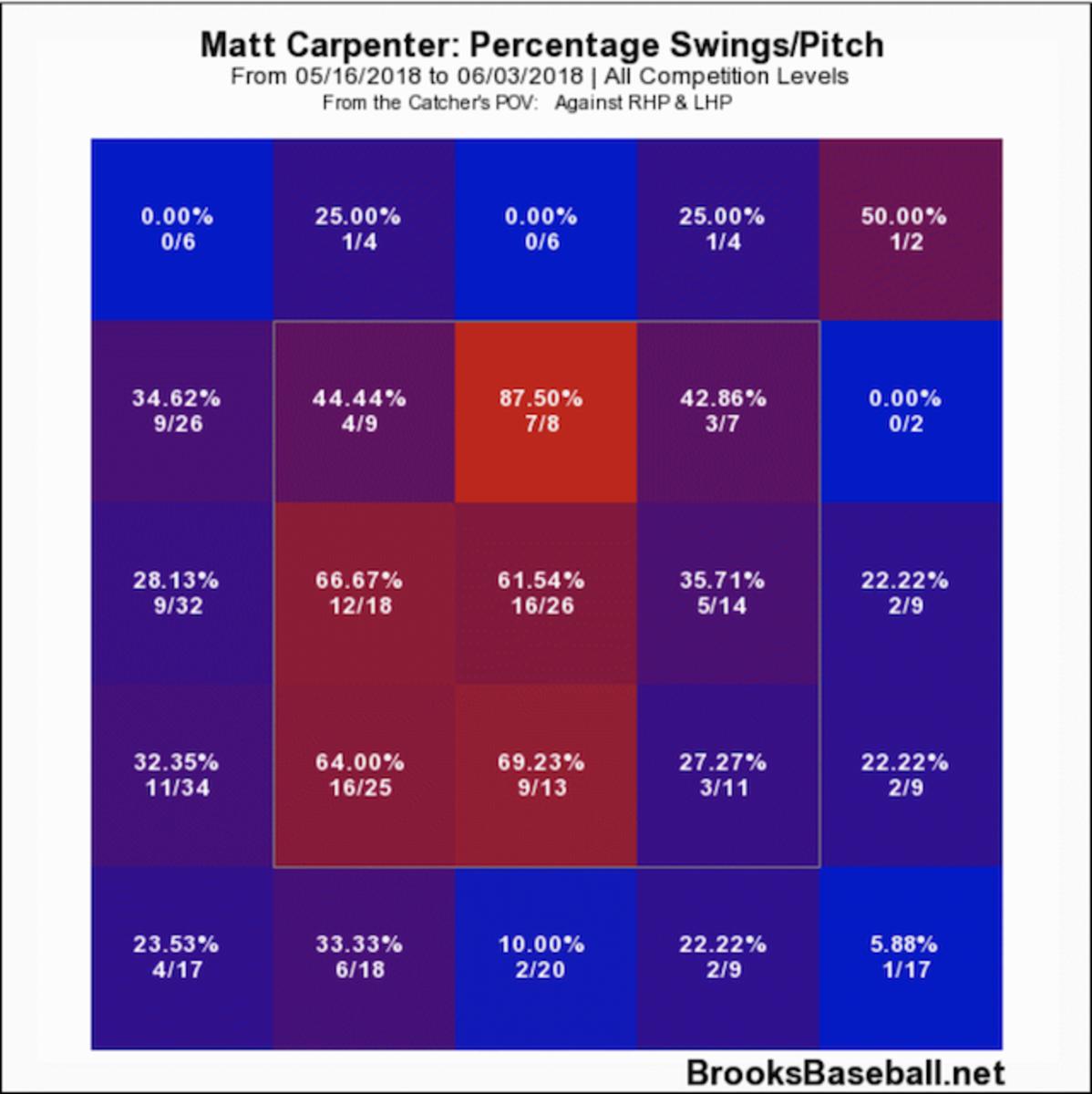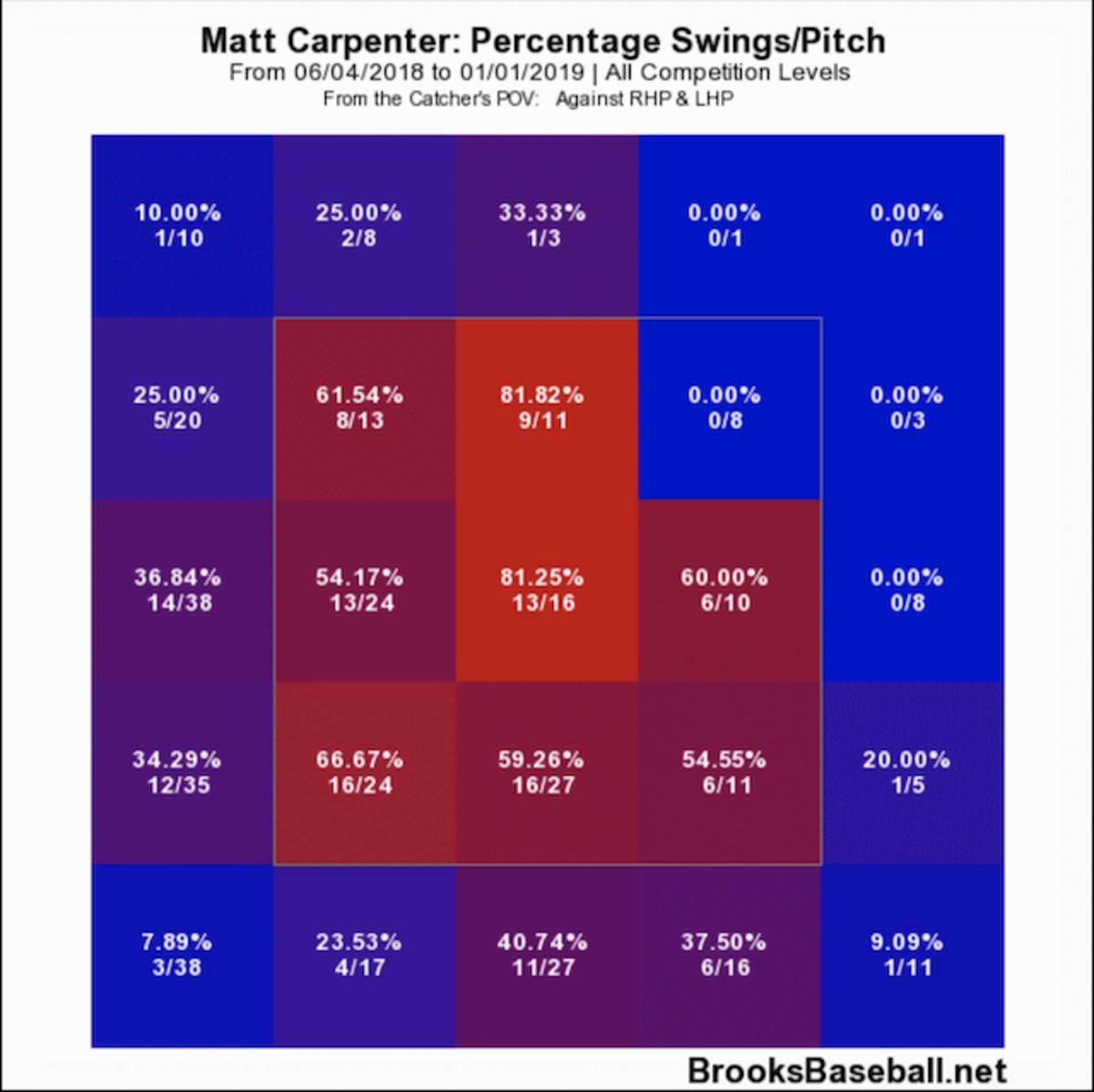Matt Carpenter's Hitting Resurgence is Thanks to His Increased Aggressiveness

Baseball is a funny game. To illustrate this immutable fact, consider the following three stat lines:
Player A: 140 PAs, .140/.286/.272, three homers, six doubles, 28.6% K%, 16.4% BB%
Player B: 80 PAs, .333/.400/.625, four homers, nine doubles, 21.3% K%, 11.3% BB%
Player C: 96 PAs, .341/.439/.692, eight homers, eight doubles, 21.9% K%, 14.6% BB%
Now, consider that the stat lines all belong to the same player, and they’re all from this season. Any guesses as to his identity? Go ahead, think about it. I’ll wait.
[waiting]
[waiting some more]
/waiting
These three lines, one dreadful and two excellent, belong to Matt Carpenter. The first one covers Opening Day through May 15, when Carpenter was one of the worst everyday players in baseball. The second covers May 16 through June 3, when he shook the malaise and got back to being himself. The third begins on June 4 and runs through the present day, a stretch during which Carpenter has hit everything in sight, and has hit most of it with authority.
Part of the reason Carpenter has hit everything in sight is because he’s swinging at everything in sight, at least by his standards. There’s a reason why I divided Carpenter’s season into three parts. Opening Day through May 15 could have been “bad Carpenter,” and May 16 through today could have been “good Carpenter.” So, why divide the good part of Carpenter’s season? It all has to do with his approach at the plate.
If you’ve been following this space at all this season, you’ll know that it often includes discussions of aggressiveness in the zone. Some people might say I’m obsessed with it. Well, sometimes a healthy obsession is a good thing, especially when the topic is important.
The 2017 seasons of Freddie Freeman and Marcell Ozuna first turned me on to the idea of how a player can significantly improve his performance by changing nothing other than stepping up his aggressiveness against strikes in all counts. After years as a dangerous, yet very patient, hitter, Freeman swung at 84.2% of all strikes he saw last year. The previous season, he was at 80.7%. The year before that, he swung at 77.7% of all strikes. Ozuna, meanwhile, increased his swing rate on strikes by nearly seven percentage points, setting a new career high at 73.1%. Both players had career years.
What does that have to do with Carpenter? We’ve seen him make a similar, gradual change from Opening Day to the present day. Carpenter is famously one of the most patient hitters in baseball with a discerning eye for the strike zone. His career-high swing rate is 41.1%, and that came in his rookie year of 2012. His career-high z-swing rate, the frequency with which a hitter swings at pitches in the zone, is 60.1%, set in 2015.
Looking at this season in full, nothing has changed. Carpenter’s z-swing rate is 55.5%, down comfortably from its 2015 peak and right in line with his career norms. Break it down as we did at the start of this column, however, and you get a different story.
Below are three zone profiles for Carpenter, courtesy of Brooks Baseball. The zones display Carpenter’s swing rates for the three periods in question. The first covers Opening Day through May 15, the second covers May 16 through June 3, and the last runs from June 4 to the present.



You can tell from a cursory glance at each zone that he swung at a lower percentage of strikes during the first six weeks of the season, when he was in possibly the worst slump of his career. The exact numbers, however, drive home just how much Carpenter has shifted his approach in the middle of this season. His z-swing rate during his ugly portion of the year was just 52.4%, and it jumped up to 57.3% for our middle window, when Carpenter started to turn his season around. Over the last four weeks, during which he has been one of the five most productive hitters in the league by fWAR, his z-swing increased again, this time to 60.4%. As Carpenter has gotten more aggressive in the zone, he has made more contact and hit for significantly more power. That isn’t a coincidence.
In that 2015 season when Carpenter set a career high in z-swing rate, he hit .272/.365/.505 with 28 homers, 44 doubles and 84 RBI. The next year he had a 58.8% z-swing, and ended up slashing .271/.380/.505 with 21 homers, 36 doubles and 68 RBI, and his counting stats would have been even better if he didn’t miss about a month due to injury. If he continues on the z-swing trajectory he has set since the middle of May, it’ll be the third year of his career that he amasses a 58% rate, not including his rookie season. Given the results in his first two such seasons, as well as what he has done over the last seven weeks, Carpenter could be headed to a career year.
